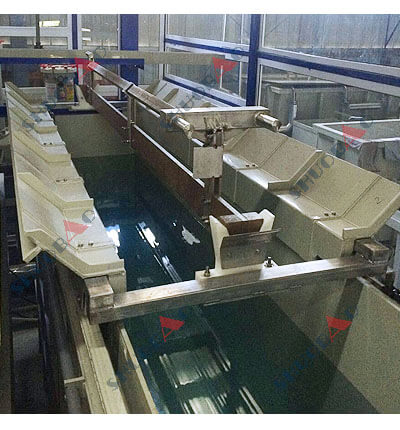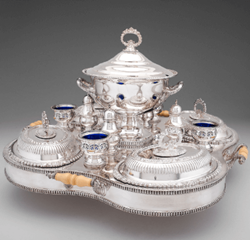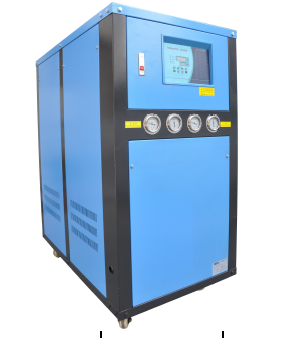Plating solution composition should be analyzed on a regular basis, adjust the concentration of the plating solution composition according to the results of the analysis. The concentration of the additives available hull cell and Angle of the cathode test to judge. The concentration of the organic matter available burning method to determine.
1. Treatment of organic impurities
With oxidant damage, activated carbon adsorption of organic compounds. That is commonly used in common electroplating antioxidant has: hydrogen peroxide, potassium permanganate, ammonium sulfite. And so on. Should be considered when using the oxidant, as by-products of plating solution. Belongs to the protein class glues available tannins, organic matter of floc.
2. The processing of metal impurities in plating solution method
- Electrolytic process, such as nickel plating liquid available electrolytic method to remove copper, zinc, lead, impurities.
- Alkaline precipitation, such as high nickel plating liquid pH value, makes the ferric iron precipitation.
- Using sodium sulfide precipitation, such as galvanized liquid, potassium sulfide precipitation of copper, lead, impurities.
- Liquid displacement method, such as galvanized with zinc dust replacement copper impurities.
- Complexing precipitation, such as nickel plating liquid copper agent with QT.
- Ion exchange method, such as the hard chrome plating liquid with cation exchange resin method to remove the ferric iron and trivalent chromium plating solution.
- Oxidation precipitation, such as nickel plating liquid with hydrogen peroxide ferrous iron oxidized to ferric iron, in order to produce iron hydroxide precipitation.
Combined with the masking method, such as nickel plating liquid with TPP coordination masking, copper zinc ions; A nickel plating liquid ferroalloy with citric acid ligand masking ferric iron ions.
- Now there are all kinds of removing impurity agent on the market supply, should undertake choosing according to actual needs, it’s best to start small experiment and then use it.
3. Oxidant to remove in plating solution
Such as nickel plating liquid containing chromium, available insurance powder reduction. The process is as follows: first plating solution with dilute sulphuric acid to pH value of 3, under stirring constantly add insurance powder 0.02 ~ 0.40 g/L, heating to 60℃, stir 1 hour or so. Then adjust the solution pH value to 5-6, hours after static filter, filter after adding suitable amount of hydrogen peroxide in the plating solution, remove excess insurance powder. Final adjustment with sulfuric acid solution pH value to normal to try electrolytic plating.
4. Solution electrolysis process requirements and methods
- Must use corrugated cathodic electrolysis.
- During electrolysis must be violent mixing, otherwise are far away from the cathode plating solution treatment is not clean.
- Should be suitable for electrolysis current density, the application of metal impurity potential is more negative larger current density; The metal impurity potential is the application of small current density.
- Electrolysis should be replaced after 2-3 hours cathode, otherwise, the peeling off on the cathode metal deposition may, fell into the solution to pollution in the plating solution.
- Transfer in the anode, some failure itself is caused by the anode is not pure.
- Select the appropriate pH value.
- Processing time is calculated through a small tank experiment.

 Combined with the masking method, such as nickel plating liquid with TPP coordination masking, copper zinc ions; A nickel plating liquid ferroalloy with citric acid ligand masking ferric iron ions.
Combined with the masking method, such as nickel plating liquid with TPP coordination masking, copper zinc ions; A nickel plating liquid ferroalloy with citric acid ligand masking ferric iron ions.



It is interesting to know all of the science that goes into this type of thing. This makes me have more respect for chrome plating when it is done successfully. How would someone determine the appropriate PH value? Thank you for an informative and applicable article!
Hi, thank you for your comments. Most of our customers they have chemist analyst. They will have the laboratory. They will test chemical for knowing the PH data. Or easy way, use the test water. then also will know the PH data. would like to know how you do normally?
I have never had a plating chemical problem, but I’m interested in learning all I can! I appreciate the advice you have here to start with a small experiment to remove impurity. Starting with a small test, seeing if that works, and moving on to fix the whole problem is very good advice!
What is the method to remove impurities from lead plating solutions
What got me here is now electrolytic plating, such as nickel plating, effectively removes copper, zinc, and lead impurities from metal. Should Dad go into metalwork, it would be good he uses electroplating nickel anodes to get his metals cleaned of poisonous lead content. By getting his metals electroplated with nickel the resulting product is safer to use and more attractive to see.